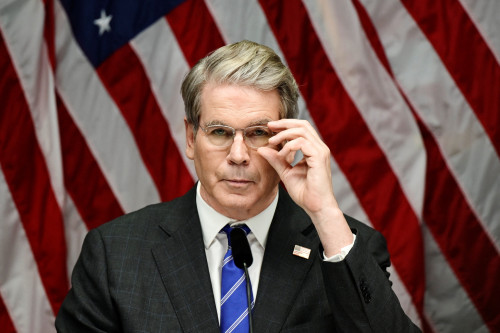By Joseph Ax, Sharon Bernstein, Gabriella Borter
(Reuters) -For decades, selective U.S. colleges and universities have considered, among other factors, whether applicants are from underrepresented minority groups, including Black, Hispanic and Native American. For just as long, critics of affirmative action have questioned whether race-conscious admissions policies are fair or warranted.
The Supreme Court weighed in on Thursday, striking down affirmative action policies at Harvard and the University of North Carolina. Reuters spoke to several advocates who have contributed to this conversation about race, history and education over the years.
EDWARD BLUM
Edward Blum, a 71-year-old legal scholar and former stockbroker, traces his campaign to end race-conscious admissions to the 1990s, when he represented white students who were denied admission at a Houston charter school.
Over the next three decades, Blum worked to fight what he views as discrimination against mostly white and Asian students in college admissions. In 2014, he founded Students for Fair Admissions, the group behind several major Supreme Court challenges to affirmative action – including the cases that led to Thursday’s decision.
“You cannot cure racial discrimination that occurred in the past with new discrimination today,” Blum said. “Race and ethnicity have no place in American life and law.”
Blum said his sense of purpose partly came from his upbringing in a liberal Jewish household in the 1960s, when racial and ethnic discrimination were central topics of public discussion and dinner table conversation.
LEE BOLLINGER
Two decades ago, as University of Michigan president, Lee Bollinger helped secure the legality of affirmative action in the U.S. Supreme Court’s 2003 ruling in Grutter v. Bollinger, which essentially upheld the use of race-conscious admissions and has withstood court challenges until now.
“Society’s got this complicated history – great and tragic – and that comes up in course after course after course in life,” Bollinger, 77 said in a recent interview. “And if you’re not in any way exposed to that, from different experiences of that history and that present, you know, you’re not an educated person.”
Affirmative action’s value extends to virtually every sector of American society because it offers minority students opportunities they would otherwise be denied, said Bollinger, who will retire as president of Columbia University on June 30.
His old school, the University of Michigan, has seen its Black student population drop by nearly half since Michigan voters outlawed affirmative action in 2006, despite efforts to find other methods of improving diversity. Universities in California and other states that have passed bans have reported similar shifts.
“If that’s spread across the whole country, it would be a reshaping of American higher education,” Bollinger said.
WARD CONNERLY
Ward Connerly’s 1939 Louisiana birth certificate includes the notation C for “colored.”
The racial designation led his family to flee the Jim Crow South and eventually settle in California, and left him with an aversion to anything that felt like discrimination or labeling.
After Republican Governor Pete Wilson appointed Connerly, at the time a policy adviser and consultant, to the Board of Regents of the University of California, he was concerned when a white couple said their son’s UC medical school rejection was a case of discrimination.
Connerly, whose ancestors were Black, white and Native American, investigated and came away feeling that the university, which considered race along with other factors, had discriminated. In the battle that followed, one African American lawmaker declared that Connerly wanted to be white.
“They called us a bunch of racists because we were challenging a system that was designed to give affirmative action to under-represented minorities,” he said in a telephone interview from his Sacramento area home.
“It was at that point that I became a true believer, not only because it was morally wrong, but … because I’m a fighter,” he said.
Connerly persuaded his fellow regents to ban affirmative action. In 1996 he took the question to California voters, who banned all consideration of race in public hiring, contracting and university admissions. He then took the battle to other states. Altogether, nine states have banned affirmative action in college admissions.
CHRISTOPHER EDLEY, JR.
By the time former President Bill Clinton asked Christopher Edley Jr. to review the federal government’s affirmative action initiatives in the mid-1990s, the Supreme Court had outlawed quota-based affirmative action and California voters would soon ban even nuanced consideration of race in public hiring, contracting and college admissions.
Edley, 70, who believes affirmative action will be necessary until the legacy of slavery is no longer evident and poverty is not more concentrated among one group than another, got to work.
He concluded that affirmative action as part of an approach that aimed to remedy historic disadvantages and did not favor unqualified applicants over qualified ones could still be used. Clinton introduced the “Mend it, but don’t end it” slogan in a 1995 speech.
Soon after, Edley helped to develop legal arguments showing that diversity not only helps under-represented groups, but also supports excellence at universities and in the workplace.
“I don’t think the job is done until the picture is bloodless,” said Edley, a former Harvard law professor who now is at UC Berkeley’s law school. “I think there is still work to be done, and there have to be effective tools for doing it.”
(Reporting by Joseph Ax, Gabriella Borter and Sharon Bernstein; Editing by Donna Bryson and Leslie Adler)





